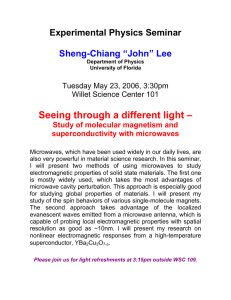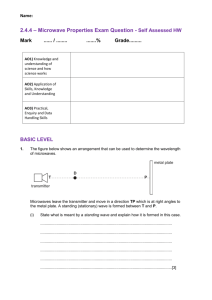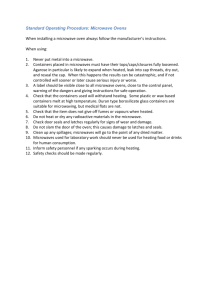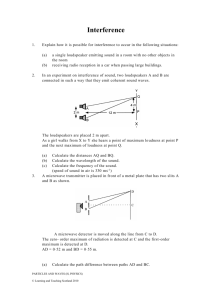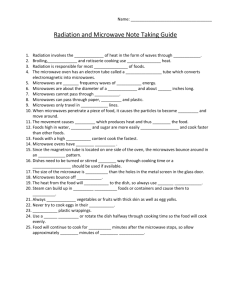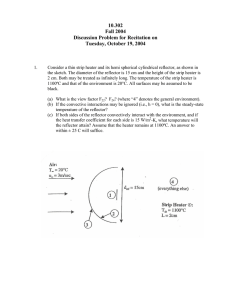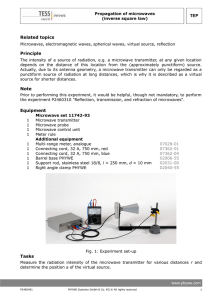Episode 324-7: Standing waves with microwaves (Word, 30 KB)
advertisement
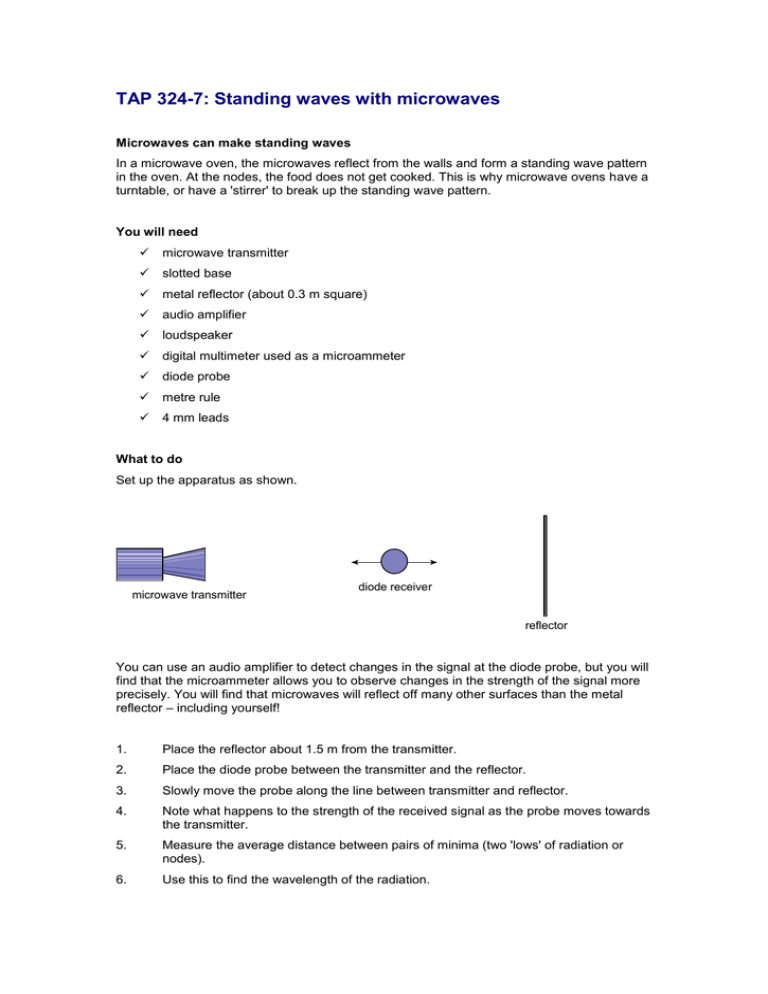
TAP 324-7: Standing waves with microwaves Microwaves can make standing waves In a microwave oven, the microwaves reflect from the walls and form a standing wave pattern in the oven. At the nodes, the food does not get cooked. This is why microwave ovens have a turntable, or have a 'stirrer' to break up the standing wave pattern. You will need microwave transmitter slotted base metal reflector (about 0.3 m square) audio amplifier loudspeaker digital multimeter used as a microammeter diode probe metre rule 4 mm leads What to do Set up the apparatus as shown. microwave transmitter diode receiver reflector You can use an audio amplifier to detect changes in the signal at the diode probe, but you will find that the microammeter allows you to observe changes in the strength of the signal more precisely. You will find that microwaves will reflect off many other surfaces than the metal reflector – including yourself! 1. Place the reflector about 1.5 m from the transmitter. 2. Place the diode probe between the transmitter and the reflector. 3. Slowly move the probe along the line between transmitter and reflector. 4. Note what happens to the strength of the received signal as the probe moves towards the transmitter. 5. Measure the average distance between pairs of minima (two 'lows' of radiation or nodes). 6. Use this to find the wavelength of the radiation. You should have seen that 1. Microwaves can set up stationary wave patterns. 2. The distance between two adjacent nodes is about 15 mm. 3. The wavelength of the radiation is about 30 mm. Safety It is important to check that the power supplies are electrically safe. Those transmitters using a Klystron oscillator require about 300 V at a hazardous current. Ensure that all high voltage connectors are a safety pattern. Practical advice The experiment is similar to one that measures the wavelength of sound, using standing waves from a reflector. Students should realise that measuring the distance between adjacent nodes is imprecise, and that it is better to measure over several nodes. The horn receiver is not suitable for this experiment. Alternative approaches This can be performed as part of a circus of experiments in which each group of students moves from one piece of apparatus to the next. Alternatively, the experiment can be performed and demonstrated to the rest of the class by one group of students. Social and human context Standing waves in a microwave cavity were for a time the most accurate method of measuring the speed of light, because the cavity could be machined to given dimensions very accurately. Microwave ovens get standing wave patterns in them so that the food cooks patchily, unless placed on a rotating turntable, or unless the microwaves are reflected in a variety of directions by a 'stirrer' or paddle. External reference This activity is taken from Advancing Physics chapter 6, 130P
